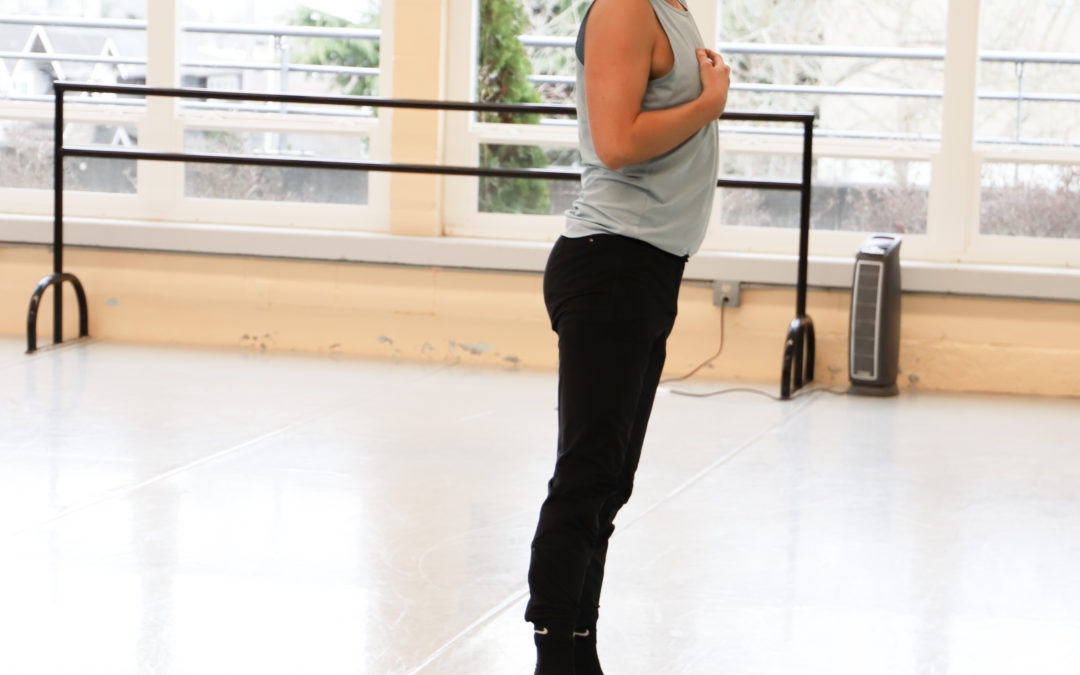How did you get into dancing?
When I was three and a half years old, my mom took me to see A Christmas Carol play. It was too scary for me, and I started crying, so she took me to the lobby and asked an usher if there’s anything else we could see. Luckily, The Nutcracker was starting in 10 minutes, and there were a few empty seats. I saw The Nutcracker for the first time, and I loved it, and I told my mom that I’d like to try ballet. She signed me up for classes, and I have been dancing ever since. Most of my training was in classical ballet, but I also took ballroom and flamenco classes and competed in jazz and tap dance.
When did you start choreographing?
When I was in high school, I assisted one of my dance teachers in her classes during her pregnancy and maternity leave. She asked me if I would be interested in choreographing for our recital, and I said, “I’d like to try.” I really enjoyed that experience, so I took choreography classes in college and kept seeking out more opportunities. After moving to Seattle, I continued choreographing, as well as working with students at Olympic Ballet School during year-round and Summer Intensive classes.
What attracts you to contemporary dance after all the training in traditional ballet?
Contemporary dance can mean a lot of things, and it can be many things. I love that it gives space for experimentation for different types of movement and types of stories that don’t necessarily have to fit a tradition. We are able to draw from our own traditions, experiences, and training and create something that can feel really personal. You’re not beholden to anything that was done before with the piece and don’t have to fit dancers into certain patterns of movement.
Does being an active dancer help you choreograph?
I can definitely empathize with dancers, especially the way we have to work right now wearing masks. Dancing in a mask is hard! But I feel their enthusiasm and their happiness to be back in the studio, and I know what that feels like because I’ve been really happy to continue dancing throughout this year as well. And as a choreographer, I want to create work that challenges the dancers and allows them to find new qualities they haven’t utilized before. I also try to give them space to find themselves in my movement because I know it can take time.
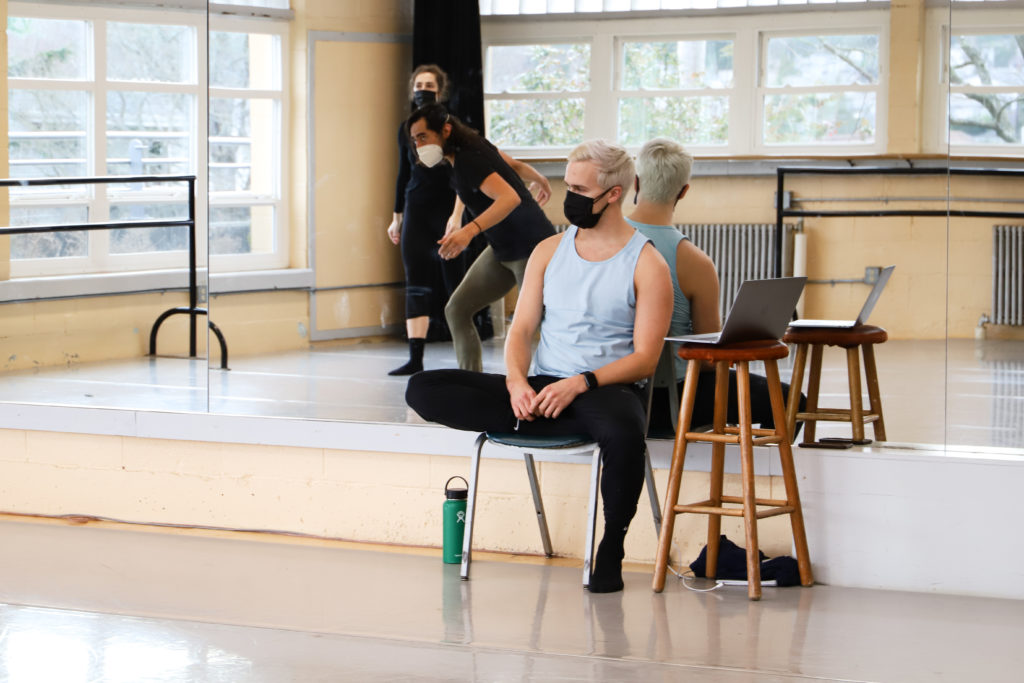
The title of the piece is In A Clearing. What is it about?
This piece reflects what we have all been dealing with in the past year. I think that even now, a year into the pandemic, I haven’t fully comprehended what we’ve gone through. This has been such a unique and profound experience, and everyone’s journey throughout this past year has been really different. I wanted to come to terms with a lot of tragedy, stress, and anxiety of the past year and find some sense of peace to reflect and move forward. And this piece makes space for that reflection.
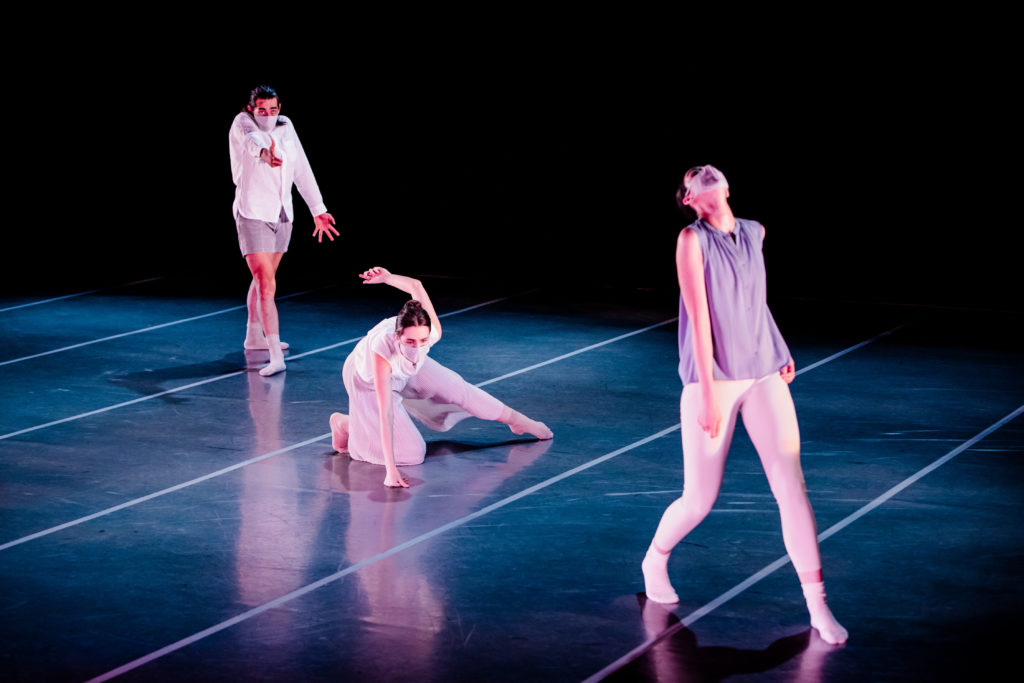
@intodustphotography
OBT dancers Alberto Gaspar, Elianna Langley, and Anisa Sinteral
But I also wanted the dancers to bring their own experiences over the past year. I don’t know their lives and their journeys, and I wanted to create an environment for them to be fully themselves in this piece. So, I didn’t tell them the ideas behind the work until much later in the process to allow them to express themselves and not to fulfill any emotional or performative desire of mine.
What are the three parts of this piece?
The first part is this feeling of being stuck. I’ve had many days where I just felt like I couldn’t get out of my head, with thoughts swirling back and forth, and it just feels so hard to escape that. In the second section, this idea of being stuck moves into finding space to be yourself, but still having to encounter the outside world. How do we navigate our relationships with other people after a year of being stuck at home? And the third section brings a sense of resolution where things feel a little bit calmer and clearer.
@intodustphotography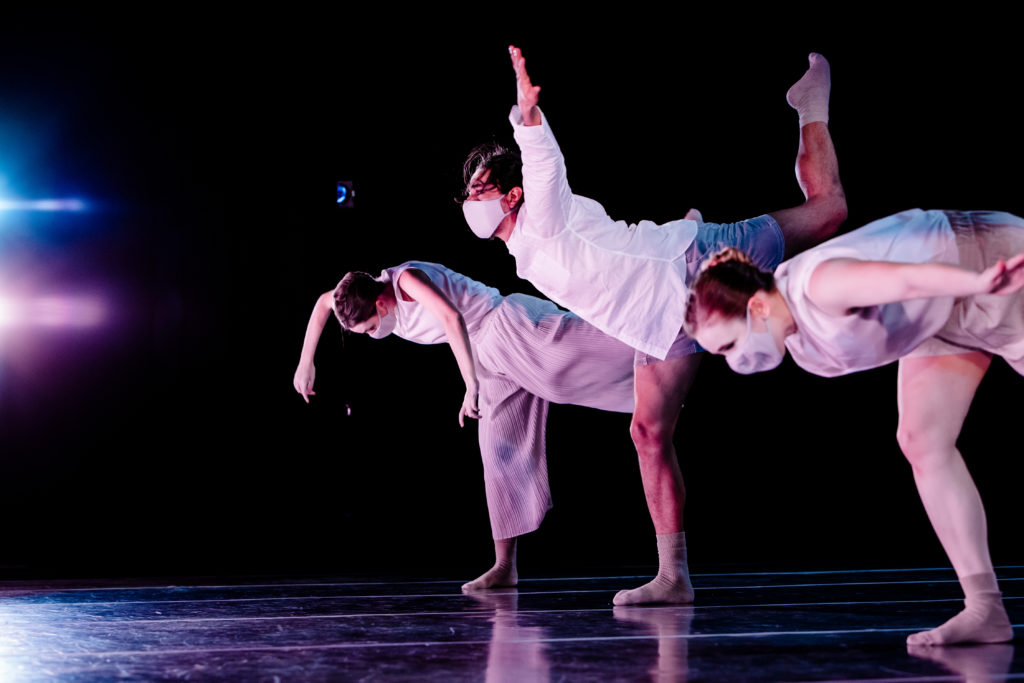
OBT dancers Elianna Langley and Anisa Sinteral
You started choreographing this piece virtually, eventually moving with dancers to the studio. How was this experience different from the way you typically work?
I actually think it has improved my ability to communicate as a choreographer. For example, when we were working on a duet, I couldn’t help the dancers figure out a particular lift. Normally, I would jump in and say: “Oh, try it like this,” but now I really have to explain and describe it in words.
@intodustphotography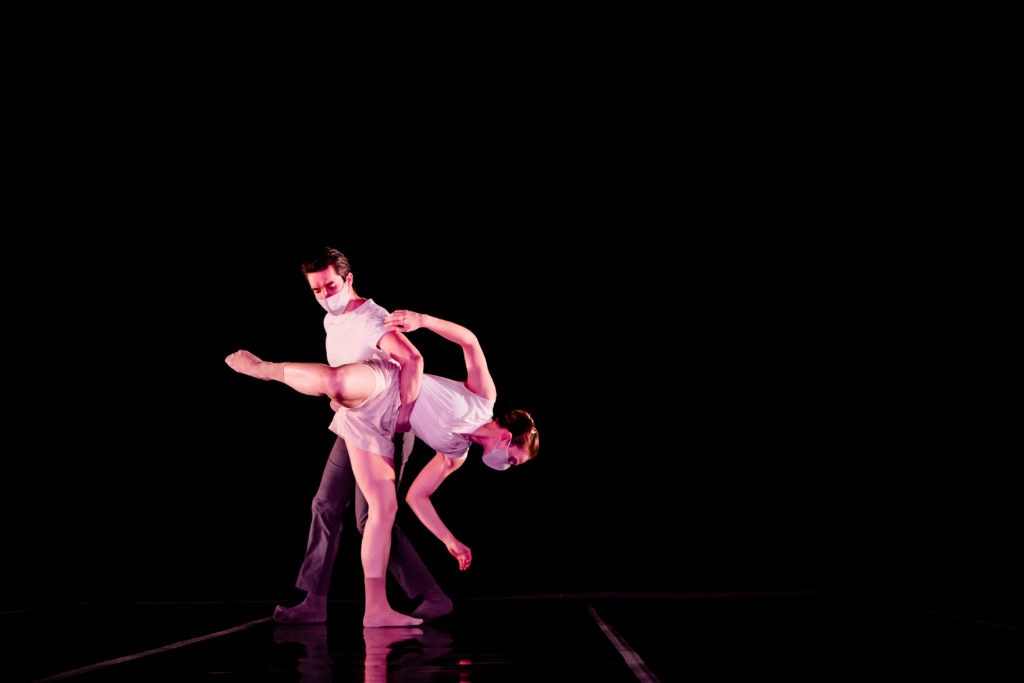
OBT dancers Carlos Narvaez and Rowan Catel
I also learned to choreograph backwards, something that I’ve never done before. I choreographed the final section first, and I did the second section entirely backwards. I took many videos and put them together to get a rough idea of where things could go with the music. I would sketch out where the dancers could be in relation to one another on stage, ideas for traveling patterns, and pieced it together like a jigsaw puzzle.
Have you created this piece specifically for being filmed? Would the choreography be different if it was performed live in a theater?
I’ve tried to take advantage of film because sometimes you can capture more detail and utilize closer shots. I am hoping that some of the details, like the gesture-based work, might connect to the viewer on screen in a different way than it would on a stage.
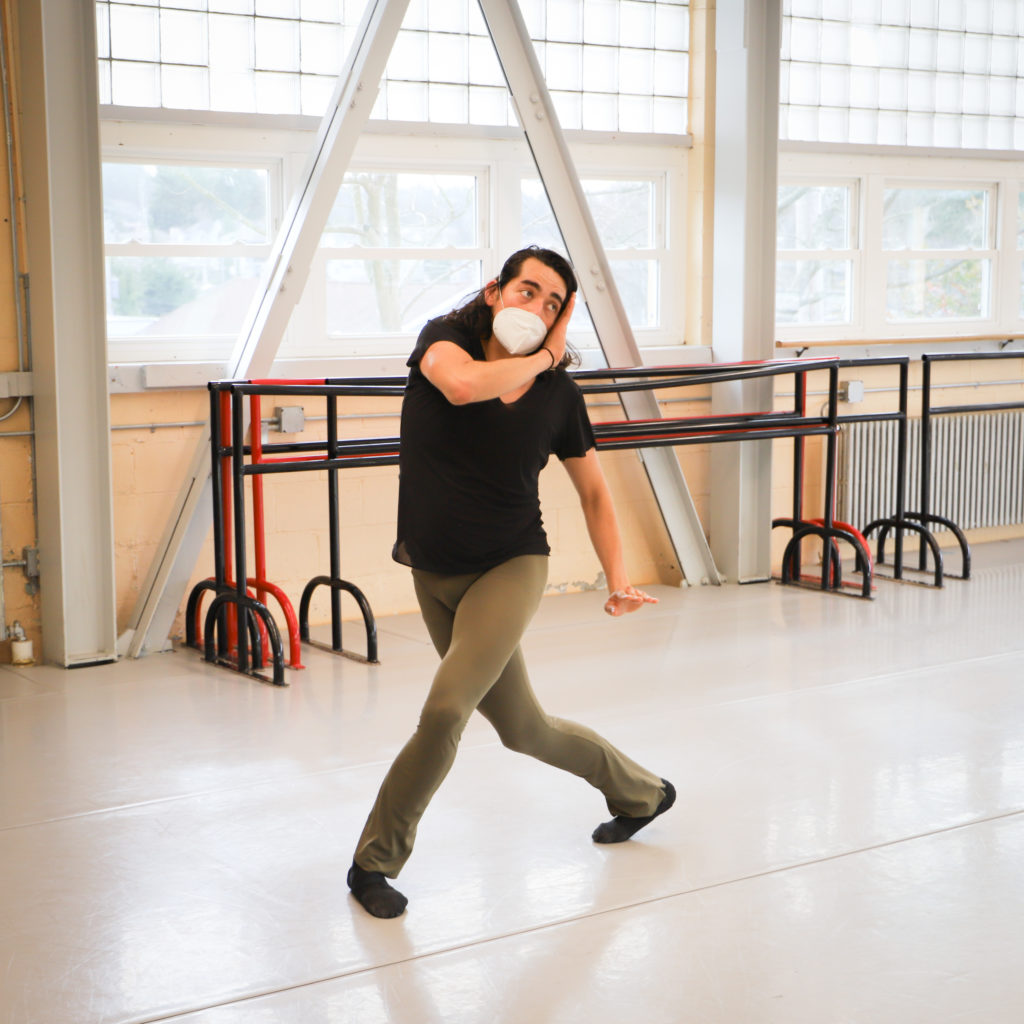
OBT dancer Alberto Gaspar
I also thought about depth because the stage can sometimes feel really flat on a screen. So, I tried to utilize the space to create depth and dimension in the structure of the piece with different elements. With only five dancers, there’s a decent amount of traveling that makes the space feel more dynamic.
How did you select the music for each part of this piece?
I really love music, and I try to bring musicality into my movements as a choreographer and as a dancer. When I was a child, I played multiple instruments: hard, violin, piano, clarinet, and trumpet. I miss playing, but I always keep a running playlist for music that I want to use in choreography.
For this piece, the music I’ve selected creates a tonal progression that supports the story arc. Winter Circle by Balmorhea in the first part is rich and textural, with some heaviness brought by piano. The second piece, Liebestraum by Franz Liszt, has this beautiful purity but also complexity with some fervor and angst. And the third piece, Tomorrow‘s Song by Ólafur Arnalds, is a harp arrangement of a contemporary piano work. It’s simultaneously sparse yet so intimate, and it almost feels like a musical blanket. It’s really nice way to exit the work with something more peaceful at the end.
What do you think your virtual audiences will take away but this piece?
I hope that they make it their own individual experiences of it. I don’t think I have the answers for what this period of time meant for me, and I certainly don’t have the answers for what this truly unbelievable situation has been like for other people. So, this piece is almost like “paint by numbers” – I’ve created the outline and the design, and they can shade in the coloring and find the emotional depth. And if it’s joyous, then it’s joyous; if it’s grief, then it’s grief, but I am hoping that this piece will create space to reflect the world through their own lens.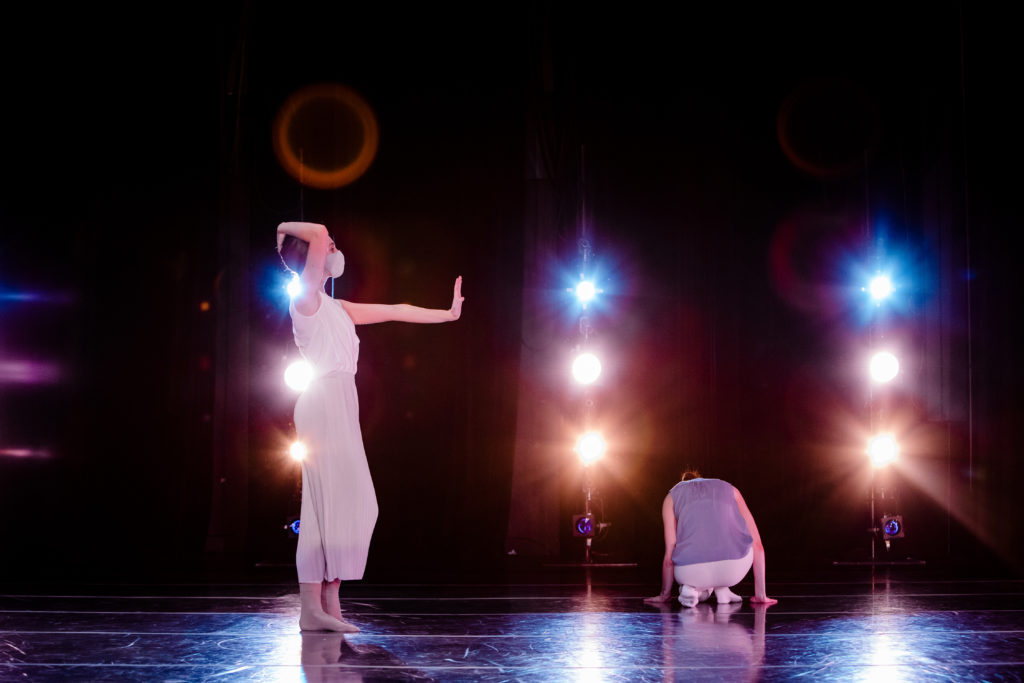 @intodustphotography
@intodustphotography
OBT dancers Elianna Langley and Anisa Sinteral
Karl Watson grew up dancing in Cleveland, Ohio. After graduating from Butler University with a BFA in dance performance, he danced for Luna Negra Dance Theater and Visceral Dance Chicago. Karl has lived in Seattle since 2016, performing with Whim W’Him, Seattle Contemporary Dance. Karl has created choreographic works for Visceral Dance Chicago, Visceral Studio Company, Dance in The Parks Chicago, and Olympic Ballet School.

